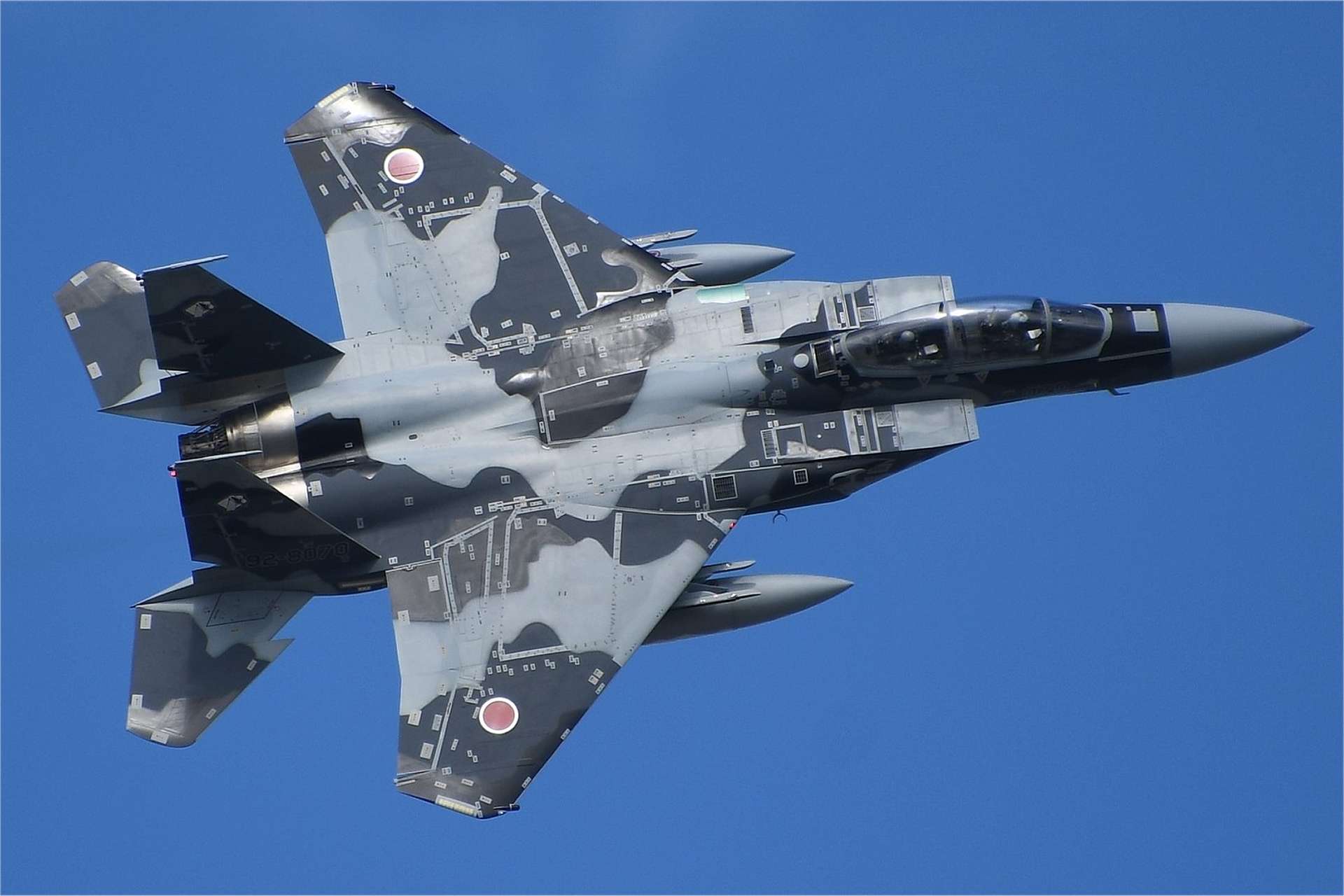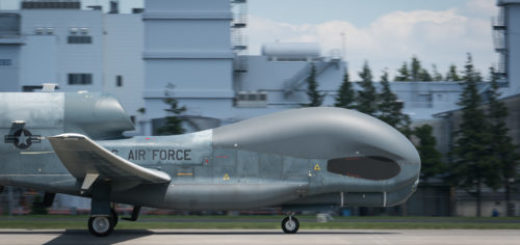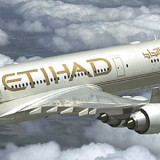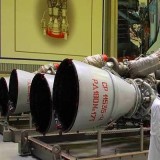US Upgrades Japan’s F-15J Fighter Jets to Counter China Threats

{loadposition bannertop}
{loadposition sidebarpub}
On December 10, 2024, the United States Department of Defense announced the awarding of a $450.5 million contract to Boeing to modernize Japan’s F-15J fighter jets under the “F-15 Japan Super Interceptor” program. This project aims to upgrade approximately 70 aircraft to enhance their capabilities in addressing contemporary defense challenges. Mitsubishi Heavy Industries (MHI), in partnership with Boeing, will carry out most of the work locally in Japan, continuing the country’s tradition of producing American military technologies under license to strengthen its defense capabilities. The project is expected to be completed by February 2030.
Follow Army Recognition on Google News at this link
Mitsubishi F-15 Japan Super Interceptor Fighter Jet (Picture source: Wikimedia)
Starting in the 2000s, Japan progressively modernized some of its F-15Js to maintain their relevance amid evolving technological demands. These upgrades were designed to address emerging regional threats, including the growing military power of China and North Korea. In 2019, the Japanese government announced an ambitious plan to transform part of its fleet into “Japanese Super Interceptors,” integrating advanced systems such as the AESA APG-82(V)1 radar, EPAWSS passive protection systems, and a new mission computer.
The upgraded F-15Js, nicknamed “Japanese Super Interceptors,” will feature cutting-edge systems, bringing them closer to the capabilities of the U.S. Air Force’s F-15EX Strike Eagle II. Key enhancements include the Raytheon APG-82(V)1 active electronically scanned array radar, an advanced mission computer, and BAE Systems’ AN/ALQ-250 Eagle Passive Warning Survivability System (EPAWSS). These technologies will deliver improved situational awareness, enhanced electronic warfare capabilities, and greater operational efficiency. According to Japan’s Acquisition, Technology, and Logistics Agency, these upgrades are crucial for national security, particularly in light of rising regional tensions and the rapid expansion of China’s fleet of modern J-10C and J-20 fighters.
Japan has long relied on the licensed production of American military aircraft, a cornerstone of its defense strategy. Introduced in 1981, the F-15J is a licensed version of the American F-15C Eagle, with Mitsubishi Heavy Industries serving as the primary contractor. The F-15J has been the backbone of Japan’s air defense, complementing a diverse fleet that includes the F-2, inspired by the F-16 Fighting Falcon, and the fifth-generation F-35A Lightning II. With 105 F-35As being assembled locally and the F-35B soon to join the fleet, Japan is enhancing its multi-role capabilities to maintain its strategic edge in the Indo-Pacific region.
The F-15J modernization project reflects Japan’s commitment to maintaining a robust air defense infrastructure amid evolving security dynamics. In addition to improving the operational readiness of its air force, this program underscores the collaborative ties between Japan and U.S. defense firms and highlights Japan’s role as a regional security leader. As China accelerates its military modernization, Japan’s investments in advanced aviation technologies demonstrate a proactive approach to ensuring stability in the Indo-Pacific.
Japan began acquiring F-15Js in the 1980s to modernize its air defense capabilities and respond to increasing tensions in East Asia. The F-15J, a licensed version of the American F-15C Eagle, is an all-weather supersonic fighter designed for air superiority. Production of the F-15J was entrusted to Mitsubishi Heavy Industries (MHI), allowing Japan to benefit from advanced American technologies while developing its expertise in aircraft manufacturing.
In the 1970s, Japan sought to replace its aging F-104 Starfighter and McDonnell Douglas F-4EJ Phantom II fighters. Following extensive evaluations, the JASDF (Japan Air Self-Defense Force) selected the F-15, considered the most advanced fighter of its time. In 1981, the first F-15J, manufactured under license by MHI, was delivered and quickly integrated into JASDF operational units. During the 1980s, approximately 200 F-15J and F-15DJ (a two-seat trainer version) aircraft were produced, incorporating modifications tailored to Japanese requirements, such as an upgraded radar warning system and custom electronic equipment.

{loadposition bannertop}
{loadposition sidebarpub}
On December 10, 2024, the United States Department of Defense announced the awarding of a $450.5 million contract to Boeing to modernize Japan’s F-15J fighter jets under the “F-15 Japan Super Interceptor” program. This project aims to upgrade approximately 70 aircraft to enhance their capabilities in addressing contemporary defense challenges. Mitsubishi Heavy Industries (MHI), in partnership with Boeing, will carry out most of the work locally in Japan, continuing the country’s tradition of producing American military technologies under license to strengthen its defense capabilities. The project is expected to be completed by February 2030.
Mitsubishi F-15 Japan Super Interceptor Fighter Jet (Picture source: Wikimedia)
Starting in the 2000s, Japan progressively modernized some of its F-15Js to maintain their relevance amid evolving technological demands. These upgrades were designed to address emerging regional threats, including the growing military power of China and North Korea. In 2019, the Japanese government announced an ambitious plan to transform part of its fleet into “Japanese Super Interceptors,” integrating advanced systems such as the AESA APG-82(V)1 radar, EPAWSS passive protection systems, and a new mission computer.
The upgraded F-15Js, nicknamed “Japanese Super Interceptors,” will feature cutting-edge systems, bringing them closer to the capabilities of the U.S. Air Force’s F-15EX Strike Eagle II. Key enhancements include the Raytheon APG-82(V)1 active electronically scanned array radar, an advanced mission computer, and BAE Systems’ AN/ALQ-250 Eagle Passive Warning Survivability System (EPAWSS). These technologies will deliver improved situational awareness, enhanced electronic warfare capabilities, and greater operational efficiency. According to Japan’s Acquisition, Technology, and Logistics Agency, these upgrades are crucial for national security, particularly in light of rising regional tensions and the rapid expansion of China’s fleet of modern J-10C and J-20 fighters.
Japan has long relied on the licensed production of American military aircraft, a cornerstone of its defense strategy. Introduced in 1981, the F-15J is a licensed version of the American F-15C Eagle, with Mitsubishi Heavy Industries serving as the primary contractor. The F-15J has been the backbone of Japan’s air defense, complementing a diverse fleet that includes the F-2, inspired by the F-16 Fighting Falcon, and the fifth-generation F-35A Lightning II. With 105 F-35As being assembled locally and the F-35B soon to join the fleet, Japan is enhancing its multi-role capabilities to maintain its strategic edge in the Indo-Pacific region.
The F-15J modernization project reflects Japan’s commitment to maintaining a robust air defense infrastructure amid evolving security dynamics. In addition to improving the operational readiness of its air force, this program underscores the collaborative ties between Japan and U.S. defense firms and highlights Japan’s role as a regional security leader. As China accelerates its military modernization, Japan’s investments in advanced aviation technologies demonstrate a proactive approach to ensuring stability in the Indo-Pacific.
Japan began acquiring F-15Js in the 1980s to modernize its air defense capabilities and respond to increasing tensions in East Asia. The F-15J, a licensed version of the American F-15C Eagle, is an all-weather supersonic fighter designed for air superiority. Production of the F-15J was entrusted to Mitsubishi Heavy Industries (MHI), allowing Japan to benefit from advanced American technologies while developing its expertise in aircraft manufacturing.
In the 1970s, Japan sought to replace its aging F-104 Starfighter and McDonnell Douglas F-4EJ Phantom II fighters. Following extensive evaluations, the JASDF (Japan Air Self-Defense Force) selected the F-15, considered the most advanced fighter of its time. In 1981, the first F-15J, manufactured under license by MHI, was delivered and quickly integrated into JASDF operational units. During the 1980s, approximately 200 F-15J and F-15DJ (a two-seat trainer version) aircraft were produced, incorporating modifications tailored to Japanese requirements, such as an upgraded radar warning system and custom electronic equipment.






